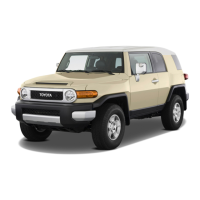
Do you have a question about the Toyota 2011 FJ Cruiser and is the answer not in the manual?
| Brand | Toyota |
|---|---|
| Model | 2011 FJ Cruiser |
| Category | Automobile |
| Language | English |
Details about the manual's scope, specifications, and illustration differences.
Explanation of a normal sound after the engine is turned off, related to fuel evaporation.
Information on non-genuine parts, Toyota's warranty, and risks of modification.
Guidelines on driving under influence, defensive driving, and driver distraction.
Rules for leaving children unattended and their safety in the vehicle.
Explanation of CAUTION and NOTICE symbols for injury and damage warnings.
Explanation of safety symbols and arrows indicating operations in illustrations.
Identification and function of the instrument panel components.
Overview of controls located on the steering wheel.
Explanation of various indicator and warning lights on the instrument cluster.
Description of automatic transmission shift lever positions and operation.
Instructions on how to adjust the tilt and telescopic steering wheel.
Explanation of part-time and full-time four-wheel drive models and their operation.
Information on correct use, fastening, releasing, and adjusting seat belts.
Explanation of the vehicle's door locking and unlocking mechanisms.
How the tire pressure warning system operates and what the indicator lights mean.
Details on adjusting front seat position, cushion angle, height, and seatback angle.
Explanation of how active head restraints function during a rear-end collision.
Instructions on adjusting, removing, and installing head restraints for all seats.
Guidelines for proper positioning of shoulder and lap belts and posture.
Procedure for fastening the seat belt by pushing the tab into the buckle.
How to move the height adjuster up or down to the desired position.
Explanation of how SRS airbags inflate and protect occupants during impacts.
Diagram identifying the various components of the SRS airbag system.
Information about the SRS warning light system and its monitoring functions.
Instructions on how to deactivate curtain shield airbags using the RSCA OFF switch.
How the system detects occupants and activates/deactivates front passenger devices.
Key considerations for choosing and installing child restraints safely.
Classification of child restraints into rear-facing, forward-facing, and booster seats.
Procedures for installing child restraints using LATCH anchors or seat belts.
Step-by-step instructions for starting the engine for automatic and manual transmissions.
Precautions for driving in the rain, breaking in a new Toyota, and operating in foreign countries.
Procedures for stopping the vehicle with automatic and manual transmissions.
Steps for parking the vehicle with automatic and manual transmissions, including on slopes.
Procedures for starting the vehicle on an incline for both transmission types.
Precautions for starting the vehicle, especially with automatic transmissions.
Safety guidelines for pedal operation, steering, exhaust fumes, and gear shifting.
How to shift the lever while the engine is on and the brake pedal is depressed.
Table detailing the function of each shift position (P, R, N, D, 4, 3, 2, L).
Maximum speeds for downshifting in 2WD and 4WD models.
Conditions under which turn signals can be operated (engine switch in ON).
Troubleshooting tip for turn signals, suggesting checking for burnt-out bulbs.
Illuminated gauges and meters when the engine switch is in the ON position.
How to switch between odometer and trip meter displays and reset the trip meter.
Instructions on how to adjust the brightness of the instrument panel lights.
Explanation of indicators that inform the driver of the vehicle's various systems' operating states.
Explanation of warning lights that inform the driver of malfunctions in vehicle systems.
Displays the direction the vehicle is heading.
Displays the outside air temperature.
Displays the longitudinal and lateral inclination of the vehicle.
Instructions on operating the headlights manually and the automatic light cutoff system.
How to switch between high and low beams and flash high beams.
Benefits of DRL system for visibility and fuel economy, and that they are not for night use.
How to adjust intermittent wiper frequency using the dial.
Automatic operation of wipers after washer squirts.
Caution against using wipers on a dry windshield to prevent damage.
Conditions for operating the rear wiper and washer (engine ON, glass hatch closed).
Caution against using wipers on a dry rear window to prevent damage.
How to use cruise control to maintain a set speed without the accelerator pedal.
Steps to activate cruise control and set the desired vehicle speed.
How to fine-tune or make large adjustments to the set cruise control speed.
Explanation of how back sensors detect obstacles behind the vehicle.
How to switch the parking assist system ON/OFF using the switch.
How the buzzer sounds indicate distance to obstacles detected by sensors.
Conditions for operating the rear view monitor system (engine ON, shift lever in R, back door closed).
How to switch the rear view monitor screen ON/OFF using the AUTO button.
Information about the limited camera coverage area and potential display variations.
Explanation of transfer modes (H, HL, N, LL) and their usage.
Procedure for shifting between H and HL modes, including clutch pedal use.
Precautions about sudden turning with a locked center differential.
How to activate the active traction control system using the A-TRAC switch.
How the slip indicator flashes when the active traction control is engaged.
Conditions where directional control and power may not be achievable on slippery roads.
How to turn the AUTO LSD system on/off using the VSC OFF switch.
How the slip indicator flashes when the AUTO LSD system controls rear wheel spin.
Precautions for using the AUTO LSD system correctly and avoiding continuous use.
Procedure for using the rear differential lock system on automatic transmission 4WD models.
How to lock the rear differential, and systems that do not operate when locked.
Conditions under which the rear differential lock disengages.
How ABS helps prevent wheel lock during sudden braking or on slippery surfaces.
How Brake Assist generates increased braking force during panic stops.
How VSC helps the driver control skidding on slippery surfaces.
Procedure to turn off TRAC using the VSC OFF switch.
Procedure to turn off both TRAC and VSC using the VSC OFF switch.
Precautions to avoid accidents and ensure safe operation of the parking assist system.
Notice regarding avoiding intensive bursts of water or steam on the sensor area.
Conditions for operating the rear view monitor system (engine ON, shift lever in R, back door closed).
How to switch the rear view monitor screen ON/OFF using the AUTO button.
Information about the limited camera coverage area and potential display variations.
Information about storage precautions, cargo capacity, and correct load limits.
How to determine correct load limits based on occupant and cargo weight.
Step-by-step guide to calculate available cargo and luggage load capacity.
Preparations including fluid checks, battery inspection, and snow tires/chains.
Precautions before driving in winter, such as dealing with frozen parts.
Local regulations for tire chain use and proper installation procedures.
Confirming total trailer weight, gross vehicle weight, axle weight, and tongue load limits.
Maximum gross trailer weight the vehicle can tow.
Information on trailer hitch assemblies and their weight capacities.
Design characteristics like higher center of gravity and ground clearance for off-road capability.
Precautions for driving off-road, including respecting property and staying on roads.
Organizations to consult for additional off-road driving information in the US.
Safety guidelines for off-road driving, avoiding risks and sharp maneuvers.
Impact of roof cargo on vehicle gravity and precautions for driving.
Recommendation to drive straight up or down steep slopes to avoid tipping.
Controls for fan speed, temperature, and air outlet selection.
How to turn the temperature control dial for warm or cool air.
How to turn the fan speed control dial clockwise or counterclockwise.
Conditions for operating the defogger (engine switch ON).
Notice to turn off the rear window defogger when the engine is off.
Overview of the Type A audio unit controls and functions.
Overview of the Type B audio unit controls and functions.
How to change the language for voice guidance, recognition, and messages.
Explanation of potential interference when using a cellular phone with the audio system.
FCC and IC compliance statements for the audio system.
How to search for stations and save them to preset buttons.
How to scan preset stations and all stations within range.
How to display radio text messages received by the system.
How to receive XM® Satellite Radio by changing the mode.
How to select channels and set them as presets.
How to change the channel category using the navigation buttons.
Procedures for loading CDs into Type A and Type B players.
How to eject a single CD or all CDs from the player.
How to select a track using the tune scroll knob or navigation buttons.
Warning about window fogging when using recirculated air mode.
Note that the system may not operate when A/C is pressed at low temperatures.
Tips to reduce potential odors from occurring in the air conditioning system.
Indicates a problem with the CD or player, such as dirt or damage.
Indicates operation stopped due to high temperature; wait and retry.
Procedures for loading and ejecting MP3 and WMA discs.
How to select MP3/WMA discs using the navigation buttons.
How to select folders and scan the first file of all folders.
How to receive XM® Satellite Radio by changing the mode.
How to select channels and set them as presets.
How to change the channel category using the navigation buttons.
How to change sound quality modes (Bass, Treble, Fade, Balance) and adjust levels.
Explanation of how to adjust Bass, Mid, Treble, Fade, and Balance settings.
How ASL automatically adjusts volume and tone quality based on vehicle speed.
How to adjust volume using vehicle controls; other adjustments on the device.
Note about potential noise during playback and using the device's power source.
How to adjust the volume using the steering wheel switches.
How to select radio stations in Radio mode.
How to turn the audio system on and select an audio source.
List of reasons why the Bluetooth audio system might not function.
Procedure to initialize the system to prevent unauthorized access to personal data.
List of compatible iPod, iPhone, and other portable device models and software versions.
How to use voice commands by pressing the talk switch and following guidance.
List of auxiliary voice commands like Cancel, Repeat, Go back, and Help.
Procedure to register a Bluetooth® enabled portable player in the system.
Quick guide to setting up a phone, adding contacts, and dialing by name.
Methods for making calls: by number, by name, speed dial, and call history.
Procedures for registering, selecting, changing names, and deleting cellular phones.
How to dial a phone number by inputting it directly.
How to dial a number by inputting the contact's name from the phonebook.
How to use speed dial for quick access to frequently called numbers.
Steps to access menus for registering, selecting, changing names, and deleting phones.
Procedure to register a cellular phone using voice commands or the control knob.
How to select a registered cellular phone from a list or by name.
Identification of storage compartments: Auxiliary box, Glove box, Bottle holders, Cup holders.
Warnings about storing items like glasses, lighters, and spray cans due to heat and fire hazards.
How to open the glove box by pulling the lever.
Instructions on using front and side sun visors by flipping them down.
How to open the cover for the vanity mirrors.
Display of the clock when the engine switch is ACC or ON; reset procedure after battery disconnect.
Indicates a potential system malfunction if the temperature display is incorrect.
The display operates when the engine switch is in the ON position.
Situations where temperature display might be delayed or incorrect.
Conditions for using the power outlet (engine switch ACC or ON).
Precautions like closing the lid and avoiding foreign objects or liquids.
Warning against using accessories exceeding 12V/10A to prevent fuse blowing.
How to use the power outlet by turning on the main switch.
Details on maximum capacity (115V AC/100W or 400W) based on vehicle state.
How to lower or raise the armrest to the desired position.
How to lift the armrest to raise it to the highest position.
Importance of using correct, securely fixed floor mats to prevent pedal interference.
Check floor mat security and ensure pedals are not obstructed by the mat.
Precaution to keep the luggage storage box closed to prevent injuries during accidents or braking.
Hooks provided for securing loose items in the luggage compartment.
How to use cargo net hooks and tie-down hooks to hang the cargo net.
How the compass indicates direction after the engine switch is turned ON or ACC/LOCK.
Table showing compass display directions (N, E, S, W).
Procedure for calibrating the compass for higher precision or perfect calibration.
Procedures for washing, drying, and waxing the vehicle exterior.
Precautions for using automatic car washes, including folding mirrors and antenna.
Warnings about high-pressure washers and their proximity to windows and fuel filler door.
General steps for removing dirt and dust using a vacuum and wiping surfaces.
Procedure for cleaning leather using a vacuum and diluted detergent.
Procedure for cleaning synthetic leather using a mild soap solution.
Toyota's recommendation for cleaning the vehicle's interior leather at least twice a year.
Tips for shampooing carpets using commercial cleaners and keeping them dry.
How to clean seat belts and check for wear, fraying, or cuts.
Daily checks that can be performed by the owner or a Toyota dealer.
Maintenance to be performed at specified intervals according to the maintenance schedule.
Procedures that can be performed by the owner, with a note on warranty coverage.
Precautions and tools needed for DIY maintenance like checking fluids and fuses.
Items and tools needed for checking and maintaining the battery.
Items and tools needed for checking and refilling brake fluid.
Steps to release the hood lock and lift the hood.
Check that the hood is fully closed and locked before driving.
Location and reference page for the washer fluid tank.
Location and reference page for the power steering fluid reservoir.
Location and reference page for the radiator cap.
Procedure to check engine oil level using the dipstick.
How to add engine oil if the level is low, including oil type and quantity.
Factors affecting oil consumption and Toyota's recommendation for consumption limits.
How to check the coolant level in the reservoir when the engine is cold.
Procedure to check for leaks if coolant level drops rapidly.
Recommended types of coolant for the vehicle, including USA and Canada specifications.
Information on checking the power steering fluid level when the engine is hot or cold.
Procedure to check the fluid level, including fluid type and items needed.
How to check battery terminals for corrosion and loose connections.
Procedure to check the battery fluid level between the upper and lower lines.
How to add distilled water to the battery, including vent plug removal and replacement.
Instructions on how to add washer fluid when the level is low.
How to check the washer fluid level using the gauge on the reservoir.
How to check tires for new tread, treadwear indicators, and worn tread.
Recommended procedure for rotating tires to equalize wear and extend life.
How the TPMS detects low tire inflation pressure and warns the driver.
Precautions for working in the engine compartment, including moving parts and hot components.
Ensure the engine switch is off; fan may run automatically if AC is on or temperature is high.
Recommendation to wear safety glasses to prevent eye injuries from flying material or spray.
Guidelines for selecting replacement wheels equivalent to original specifications.
Precautions for using Toyota wheel nuts/wrenches and checking tightness after driving.
Precautions to prevent accidents, loss of control, and injury when replacing wheels.
Step-by-step instructions to remove the air conditioning filter by opening the glove box.
How to remove the old filter and replace it with a new one, ensuring correct orientation.
Guidance on inspecting and replacing the air conditioning filter based on maintenance schedule.
List of items required for key battery replacement: screwdriver and CR2016 battery.
Step-by-step guide to replace the battery in the key remote.
Symptoms indicating a discharged key battery and proper replacement.
Precautions regarding sulfuric acid and hydrogen gas to prevent injury or explosion.
Recommendation to charge the battery in an open area with sufficient ventilation.
First aid for electrolyte contact with eyes, skin, or clothing, and accidental ingestion.
Location of fuses in the engine compartment (Type A and Type B).
Location of fuses under the instrument panel, including lid removal.
How to identify a normal vs. blown fuse and replace it with an appropriate rating.
Check the wattage of the light bulb to be replaced.
Diagram showing the locations of front headlights, turn signals, and marker lights.
Diagram showing the locations of rear lights: stop/tail, turn signals, back-up, and license plate.
Information about temporary condensation in headlight lenses not indicating a malfunction.
Precautions for replacing bulbs: turn off headlights, avoid touching glass, ensure full seating.
Ensure bulbs are fully seated and locked to prevent heat damage, fire, or water entry.
Steps to take after correcting a suspected problem to ensure the warning light turns off.
Indicates a door, back door, or glass hatch is not fully closed; check closure.
Alerts the driver to fasten their seat belt, with different sounds based on speed and duration.
How to jump-start the vehicle using jumper cables and a second vehicle.
Tips to avoid battery discharge, like turning off accessories and unnecessary electrical components.
Precautions to prevent igniting flammable gas from the battery during jump-starting.
Steps to free the vehicle when stuck in mud, dirt, or snow.
How the emergency hook is used to pull the vehicle out when stuck.
Caution when rocking the vehicle to free it, ensuring the area is clear.
Steps to stop the vehicle in an emergency when normal braking is impossible.
Procedure for reducing speed when the shift lever cannot be moved to N.
Table showing overall dimensions, wheelbase, tread, vehicle capacity, and towing capacity.
Details on engine model, type, bore and stroke, displacement, and belt/valve clearance.
Information on fuel type, octane rating, and fuel tank capacity.
Specifications for spark plug make (DENSO) and gap (0.043 in. / 1.1 mm).
Notice to use only iridium-tipped spark plugs and not adjust the gap.
Details on battery specific gravity readings and charging rates.
List of electronic features that can be personalized, requiring dealer programming.
Customizable settings for wireless remote: unlock operation, time elapsed, signals, lock buzzer, panic.
Customizable settings for unlocking using a key.
Minimum pedal clearance when depressed with a specific force.
Specification for pedal free play in inches and millimeters.
Specifies the brake fluid type as SAE J1703 or FMVSS No. 116 DOT 3.
Typical tire size information (e.g., P265/70R17 113S).
Recommended cold tire inflation pressures for front, rear, and spare tires.
Specification for wheel nut torque in ft-lbf, N-m, and kgf-m.
How to contact NHTSA via phone, website, or mail regarding safety defects.
Procedure to follow if you have a flat tire.
Troubleshooting steps for when the engine will not start or the battery is discharged.
Emergency procedure if the shift lever is stuck in P.
Vehicle's fuel tank capacity in gallons, liters, and imperial gallons.
Information on the required fuel type and octane rating.
Recommended cold tire inflation pressure for front and rear tires.

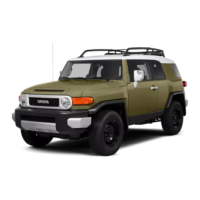
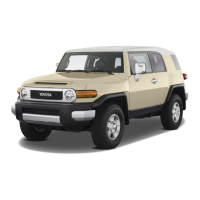
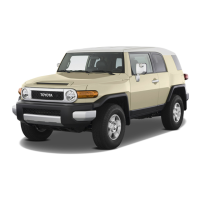
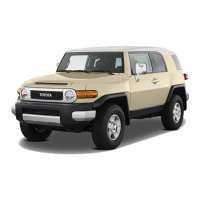
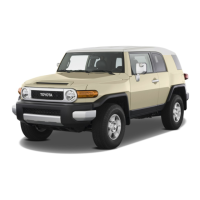
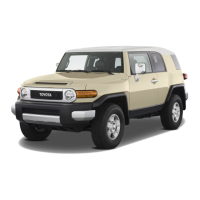

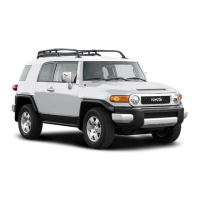
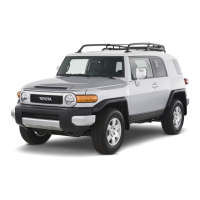
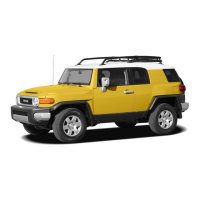
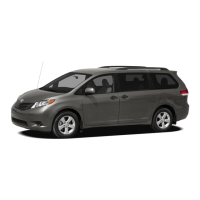
